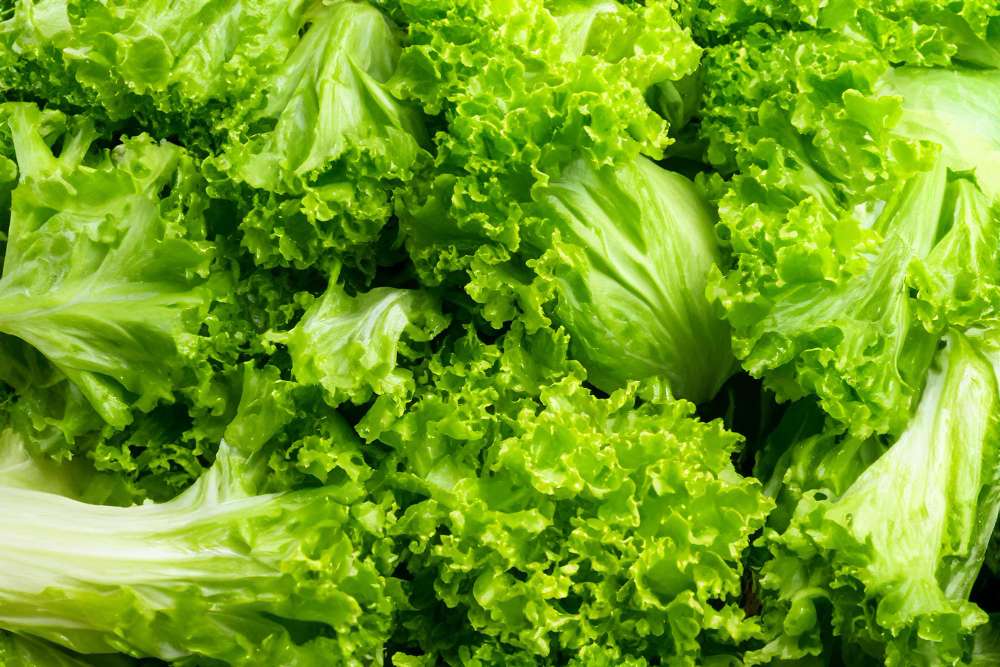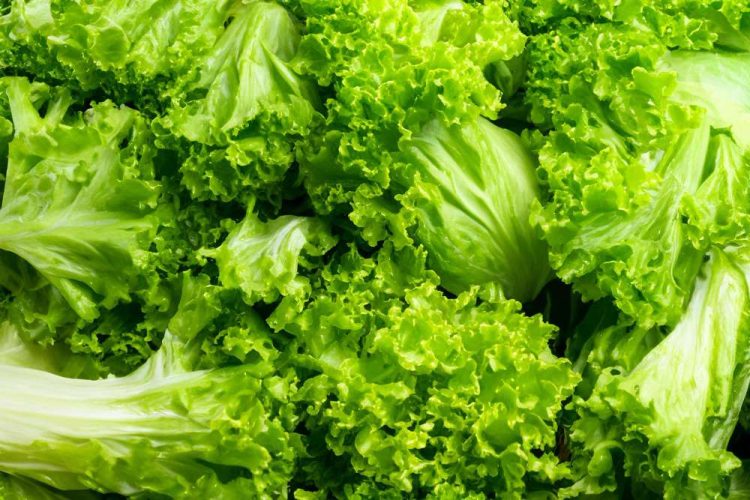Green Lettuce – Coral, known for its distinctive bright green colour and crisp texture, is a popular variety of lettuce that adds both flavour and visual appeal to dishes. This guide provides a comprehensive look at the nutritional profile, health benefits, uses, and frequently asked questions about Coral lettuce.

1. Nutritional Profile of Green Lettuce – Coral
Green Lettuce – Coral is not only refreshing and flavorful but also packed with essential nutrients. Here’s a breakdown of its nutritional content:
- Low in Calories: Coral lettuce is very low in calories, with approximately 14 calories per 100 grams, making it an excellent choice for those managing their weight.
- Vitamins:
- Vitamin A: Coral lettuce is rich in vitamin A, primarily in the form of beta-carotene, which supports healthy vision, skin health, and immune function.
- Vitamin C: It contains vitamin C, an antioxidant that aids in immune function, promotes skin health, and helps with the absorption of iron.
- Vitamin K: This lettuce is a good source of vitamin K, which is important for blood clotting and maintaining bone health.
- Minerals:
- Calcium: Coral lettuce provides calcium, essential for bone health, muscle function, and nerve signalling.
- Iron: It offers iron, necessary for the production of haemoglobin and the transport of oxygen throughout the body.
- Magnesium: The lettuce contains magnesium, which supports muscle and nerve function, blood sugar control, and bone health.
- Antioxidants:
- Lutein and Zeaxanthin: These carotenoids are present in Coral lettuce and are known for their role in maintaining eye health and reducing the risk of age-related macular degeneration.
- Flavonoids: Coral lettuce contains flavonoids with antioxidant properties that help protect cells from damage and support overall health.
- Fibre: Coral lettuce is a good source of dietary fibre, which aids in digestion and helps maintain regular bowel movements.
2. Health Benefits of Coral Lettuce
Coral lettuce offers a range of health benefits due to its rich nutritional profile and bioactive compounds. Here are some key advantages:
a. Supports Digestive Health
Coral lettuce is high in dietary fibre, which supports digestive health by promoting regular bowel movements and preventing constipation. Fibre also helps maintain a healthy gut microbiome.
b. Promotes Eye Health
The lutein and zeaxanthin in Coral lettuce contribute to maintaining eye health. These antioxidants protect the eyes from harmful blue light and reduce the risk of age-related macular degeneration.
c. Enhances Skin Health
The vitamins A and C found in coral lettuce are important for healthy skin. Vitamin A promotes the growth and regeneration of skin cells, and vitamin C encourages the synthesis of collagen, giving a youthful and healthy glow to the skin.
d. Supports Bone Health
The vitamin K and calcium content in Coral lettuce support bone health. Vitamin K aids in bone mineralization and helps prevent bone loss, while calcium is essential for maintaining strong bones and teeth.
e. Boosts Immune Function
Coral lettuce contains vitamin C, which enhances the production of white blood cells and acts as an antioxidant to protect against infections and diseases.
f. May Aid in Weight Management
Coral lettuce is low in calories and high in fibre, making it an excellent choice for weight management. The fibre content promotes satiety and reduces overall calorie intake.
g. Supports Heart Health
The antioxidants and fibre in Coral lettuce contribute to heart health. Fibre helps lower cholesterol levels, while antioxidants reduce oxidative stress and inflammation, supporting cardiovascular function.
3. How Coral Lettuce Supports Various Organs
Coral lettuce’s health benefits extend to various organs and systems in the body. Here’s how it supports specific organs:
a. Digestive System
The dietary fiber in Coral lettuce supports digestive health by promoting regular bowel movements and preventing constipation. It also contributes to a healthy gut microbiome, which is essential for overall digestive wellness.
b. Eyes
Coral lettuce supports eye health with its high levels of lutein and zeaxanthin. These carotenoids help protect the eyes from harmful blue light, reduce the risk of macular degeneration, and support overall visual function.
c. Skin
Coral lettuce enhances skin health with its vitamins A and C. Vitamin A supports skin cell production and repair, while vitamin C promotes collagen synthesis and protects against skin damage from free radicals.
d. Bones
The vitamin K and calcium in Coral lettuce support bone health. Vitamin K aids in bone mineralization and helps prevent bone loss, while calcium is crucial for maintaining strong bones and teeth.
e. Immune System
Coral lettuce boosts immune function with its vitamin C content. Vitamin C enhances the production of white blood cells and acts as an antioxidant to protect the body from infections and diseases.
4. How to Incorporate Coral Lettuce into Your Diet
Coral lettuce is a versatile ingredient that can be used in various culinary applications. Here are some ideas for incorporating it into your meals:
a. Salads
Use Coral lettuce as a base for salads. It’s crisp texture and vibrant colour add freshness and visual appeal. Combine it with other vegetables, fruits, nuts, and proteins for a nutritious and satisfying meal.
b. Sandwiches and Wraps
Add Coral lettuce to sandwiches and wraps for extra crunch and flavour. It pairs well with a variety of fillings, including meats, cheeses, and vegetables.
c. Smoothies
Incorporate Coral lettuce into green smoothies for added nutrients. Blend it with fruits, vegetables, and a liquid base for a refreshing and healthful drink.
d. Garnishes
Use Coral lettuce as a garnish for soups, stews, and main dishes. It’s vibrant colour and fresh flavour makes it an attractive and flavorful addition to various dishes.
e. Stir-Fries
Add Coral lettuce to stir-fries for a unique twist. It can be added at the end of cooking to preserve its crisp texture and vibrant colour.
Additional Resources
- The Benefits and Uses of Green Lettuce – Lolo Rosso: A Comprehensive Guide
- The Benefits and Uses of Green Lettuce – Coral: A Comprehensive Guide
- The Benefits and Uses of Red Lettuce – Coral: A Comprehensive Guide
- The 10 Benefits and Uses of Romaine Lettuce: A Comprehensive Guide
- The Benefits and Uses of Butterhead Lettuce: A Comprehensive Guide
- The Benefits and Uses of Leafy Iceberg Lettuce: A Comprehensive Guide
- 10 Benefits and Uses of Italian Basil: A Comprehensive Guide
Table of Contents
Categories
Latest Post’s
FAQs
Q1. Is Coral lettuce safe to eat raw?
A1: Yes, Coral lettuce is safe to eat raw. It is commonly used in salads and sandwiches. Be sure to wash the leaves thoroughly to remove any dirt or contaminants before consumption.
Q2. Can Coral lettuce be cooked?
A2: While Coral lettuce is typically enjoyed raw, it can be added to cooked dishes like stir-fries or soups. However, cooking may cause the leaves to lose some of their crispness and vibrant colour.
Q3. How can I store Coral lettuce?
A3: Store Coral lettuce in the refrigerator in a plastic bag or airtight container. It is best to use it within a week for optimal freshness. Keep the leaves dry to prevent wilting.
Q4. Can Coral lettuce be grown at home?
A4: Yes, Coral lettuce can be grown at home. It prefers cooler temperatures and well-drained soil. You can start it from seeds or young plants, and it can be grown in garden beds or containers.
Q5. What are some health benefits of eating Coral lettuce?
A5: Coral lettuce supports digestive health, promotes eye health, enhances skin health, supports bone health, boosts immune function, and may aid in weight management. Its high nutrient content contributes to overall well-being.




